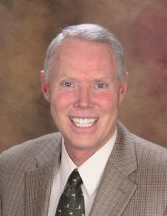This article was originally published in a sponsored newsletter.
I’ve been fortunate over the years to be able to limit the types of pathologies and patients that I prefer to see in my practice. I’ve found that while ocular surface disease (OSD) can be extremely challenging for both doctors and patients, it can also be incredibly rewarding. It’s challenging because the multifaceted etiologies of OSD can be difficult to extract from patients during the short time we have for comprehensive exams. I always encourage follow-up appointments to fully uncover these etiologies, but this added time can also be arduous for staff to handle.
Over the past 15 years, I have limited my practice to fulfilling the unmet needs of “forgotten patients” who feel that they have not been heard by their doctors. Worse, they often feel that their extremely frustrating symptoms have been undervalued. Of course, we don’t do this intentionally, but it’s easy to become complacent when we’re not the ones who are affected by these symptoms every day. In fact, in past surveys, dry eye patients have equated their experience to the seriousness of cardiac angina.1
So, why do I enjoy these patients so much? To begin with, when you listen and actually hear a patient’s symptoms and concerns, they are appreciative. When you can provide answers and treatments, they are grateful beyond belief. They have been heard and understood, and they become loyal patients. It’s such a great feeling to give patients their lives back in areas that were negatively affected by their symptoms.
To me, each patient is a mystery. The more complicated the case, the more I dig in and try to unravel why they have the condition and why they are so affected by it. It’s a fun challenge, and it’s the reason I tell all new patients, “Don’t give up on me and I won’t give up on you.” I love seeing their renewed hope when I show them I’m up for the challenge.
This subspecialty is also great for practices. When you provide a high level of care to patients, you build trust and rapport, which is beneficial for practice growth.
The final reason that I enjoy specializing in OSD is the innovation of fellow professionals and scientists in our industry. I always look forward to new solutions from the amazing minds that are working to help these patients. We have more treatments than ever and yet we are still in the infancy of decoding all the etiologies and possible treatments. Each new piece of research is a step toward helping more people and making sure they aren’t forgotten.
Reference:
- Messmer E, Chan C, Asbell P, Johnson G, Sloesen B, Cook N. Comparing the needs and preferences of patients with moderate and severe dry eye symptoms across four countries. BMJ Open Ophthalmol. 2019;4(1):e000360. doi: 10.1136/bmjophth-2019-000360




